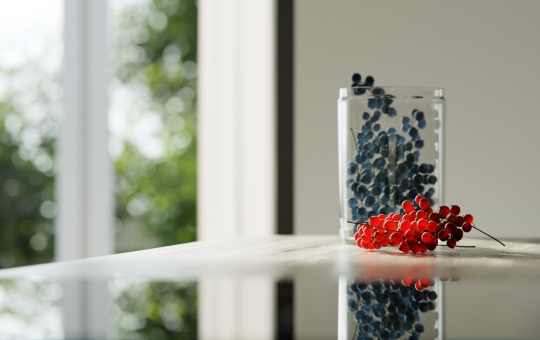Welcome to my Art of Rendering Masterclass! This is where you'll learn what makes the difference for some 3D renderings to stand out from the crowd. What's the secret behind it? Can you make your images look a whole level better? Does it take any special talent or superpower? This Masterclass will help you to shorten the process of becoming an artistically minded creator. What took me several years to understand you can now learn in a few months or even weeks of practice.
This Masterclass is not only for people, who want to create architectural visualizations. The techniques and tips I share apply to any 3D CG field and even beyond that! There are two reasons I've decided to focus on architecture. First, this masterclass is the extension of my Interior Visualization Secrets Course. If you've already finished it, then this Masterclass will greatly benefit the knowledge you already have. Second, architectural visualization is a great topic for every aspiring 3D professional to at least touch upon. Why?
Getting better in architectural visualization can only benefit you as a 3D professional. You'll be able to understand many technical and artistic aspects of computer graphics. At the same time, you're not getting too deep into the topics and overspecializing in any area. This is very important for people only start with 3D CG and aren't sure who they want to become in the future.
Technical aspects of architectural visualization:
● Architectural Documentation Reading
● 3D Modeling
● Creating Materials
● Textures and UV Mapping
● Illumination and Rendering
● Post Production
● Animation Basics
Artistic aspects of architectural visualization:
● Scale and Proportions
● Composition
● Visual Storytelling
● Understanding Light
Over the years I've seen and also meet personally many great artists and architects. Below I'm sharing the ones that either influenced the way I do things creativelly, or simply are worth checking out for inspiration.
● Alex Roman: The biggest inspiration to every architectural visualization artist. At least if you've been doing this for 10-15 years. He's the maker of "The Third and the Seventh" animation. Up to this day, I think it's the best arch viz animation ever created. And he did it in 2009!
● Viktor Fretyán: Another great 3D artist. His visualization style was something that inspired me from the very early days and still motivates me to learn new things. I consider his renderings to be still one of the best made in terms of capturing light and creating mood. I also recommend reading this interview with Viktor.
● Piotr Jablonski: Illustrator and one of the best concept artists in the world. A very cool guy which I also happen to know personally, talented yet very hard working. I love his style which sometimes reminds me of Zdzislaw Beksinski paintings. Both Piotr and Zdzislaw studied architecture.
● John Pawson: Minimalist architect and designer, the one who admire the most. I even used Pawson's buildings as examples in my graduation thesis. After moving to Germany I had the opportunity to admire Pawson's projects such as Moritzkirche or Wooden Chapel.
● Anna Philipp: An architect I truly admire for her projects and design philosophy. For over 300 years her family practiced carpentry and wooden house construction. She now carries the tradition as an architect together with her brother. I had a chance to see some of the projects in person. Villa Schatzlmayr is trully inspirational one. You can also watch it here.
Practicing will be an essential part of this Masterclass. I would like you to not only watch my videos but experiment and apply the newly learnt skills. Before we continue, try spending some time and answering the following questions:
Who is your inspiration?
Are you following any 3D artists or creators in general? Who inspires you and why them? Is it someone you've learned about in school, a childhood memory? Or someone you simply found on a site like Artstation or Behance?
What makes their renderings stand out?
What exactly do you like in the artworks of people you follow? Is it the style, story, colors, illumination, or something completely else? Try to be specific, even if you're not sure and you just "like their works in general".
Which style of renderings or images would you like to create?
Have you ever thought about developing your own artistic style? Do you have any artistic goals when thinking of getting better in 3D graphics? Perhaps you already have some artistic style preferences? Do you want to continue developing in that direction?
Download my personal references library here (available after enrolling to the Masterclass):
Whenever you're ready, let's move to the next chapter!







